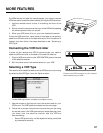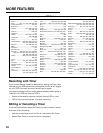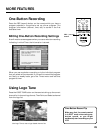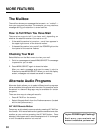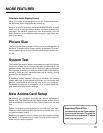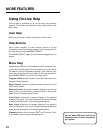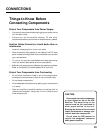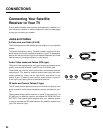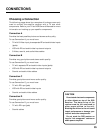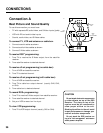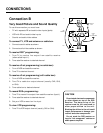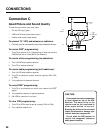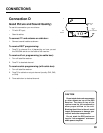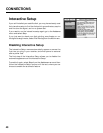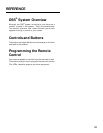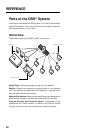
CONNECTIONS
35
Choosing a Connection
The following pages show four examples of hookups commonly
used to connect the satellite receiver with a TV and other
components. Refer to your TV and VCR Owner’s Manuals for more
information on hooking up your specific components.
Connection A
Provides the best possible picture and stereo audio quality.
To use Connection A, you must have:
• TV with S-Video input, plus separate RF and audio/video inputs
(jacks).
• VCR with RF and audio/video inputs and outputs
• S-Video, coaxial, and audio/video cables
Connection B
Provides very good picture and stereo audio quality.
To use Connection B, you must have:
• TV with separate RF and audio/video inputs (jacks)
• VCR with RF and audio/video inputs and outputs
• Coaxial and audio/video cables
Connection C
Provides good picture and mono audio quality.
To use Connection C, you must have:
• TV with RF input (jack)
• VCR with RF and audio/video inputs
• Coaxial and audio/video cables
Connection D
Provides good picture and mono audio quality.
To use Connection D, you must have:
• TV with RF input (jack)
• Coaxial cables
CAUTION
Do not stack electronic components
or other objects on top of the DSS
Receiver. The slots on top of the
receiver must be left uncovered to
allow proper airflow to the unit.
Blocking the airflow to the unit could
impair performance or damage your
receiver and other components.
Do not stack the DSS receiver on
top of a “hot component” such as an
audio power amplifier.



